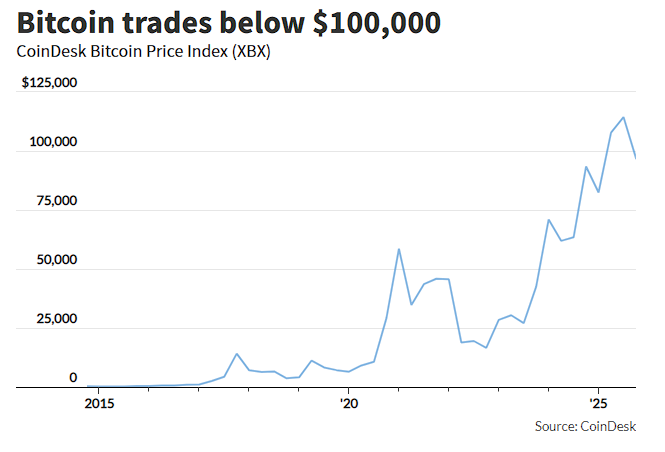Legal Regimes and the Future of Blockchain Investment: Bitmine's Strategic Navigation of Transparency and Liability
- Bitmine Immersion navigates common law (Delaware) and civil law (Quebec) frameworks to balance innovation with transparency in blockchain governance. - Quebec's ARLPE-style real-time UBO disclosures and third-party ETH audits attract ESG capital, reducing greenwashing risks and institutional trust gaps. - Civil law jurisdictions enforce standardized ESG metrics and liability clarity, while common law systems face regulatory fragmentation and higher litigation risks. - Investors prioritize firms with enfo
The blockchain sector's rapid evolution has created a unique intersection of technological innovation and regulatory complexity. For investors, understanding how legal regimes shape corporate transparency and liability is critical to assessing long-term viability. Bitmine Immersion Technologies (BMNR), a NYSE-listed entity with $6.612 billion in Ethereum (ETH) holdings, exemplifies the strategic challenges and opportunities faced by blockchain infrastructure firms in a fragmented global regulatory landscape.
The Legal Divide: Common Law vs. Civil Law Frameworks
Blockchain firms operate in a world where legal traditions—common law and civil law—dictate the rules of the game. Common law jurisdictions, such as the U.S. and U.K., rely on judicial precedent and self-reported disclosures, often leading to opacity and inconsistent enforcement. The U.S. Corporate Transparency Act (CTA), invalidated in 2023, left a regulatory vacuum, while the U.K.'s PSC register lacks the granularity of civil law systems. This opacity increases operational risks, as seen in the 2019 collapse of Burford Capital , where speculative overvaluation thrived in the absence of real-time transparency.
In contrast, civil law jurisdictions like Quebec, Switzerland, and Germany enforce codified statutes that mandate public registration of ultimate beneficial owners (UBOs). Quebec's Act Respecting the Legal Publicity of Enterprises (ARLPE) requires entities controlling 25% or more of voting rights to register ownership with external verification. This creates real-time, publicly accessible data, reducing information asymmetry and fostering institutional trust. For Bitmine, aligning with Quebec's transparency standards has attracted ESG-focused capital, such as the Canada Pension Plan's $280 million investment in Ethereum ventures in 2025.
Bitmine's Hybrid Strategy: Balancing Flexibility and Accountability
Bitmine's governance model is a hybrid of Delaware's common law flexibility and Quebec's civil law rigor. As a Delaware-incorporated entity, it benefits from the state's capital-raising advantages but faces challenges in maintaining real-time transparency. Delaware's self-reported disclosures lack the enforceability of civil law mandates, increasing litigation risks. For example, the 2025 In re Mindbody Stockholder Litigation case affirmed third-party liability for aiding fiduciary breaches, underscoring the need for Bitmine to adopt Quebec-style transparency to mitigate cross-jurisdictional exposure.
The firm's strategic alignment with Quebec's transparency benefits is evident in its third-party audits of ETH holdings and ESG reporting. These audits, encouraged by Quebec's Autorité des Marchés Financiers (AMF), mitigate greenwashing risks and enhance governance credibility. Meanwhile, Delaware's legal flexibility allows Bitmine to innovate in areas like immersion cooling technology, which reduces energy consumption and aligns with ESG metrics.
Liability and Operational Risks: A Global Perspective
Legal liability frameworks further differentiate jurisdictions. In civil law systems like Switzerland and Liechtenstein, liability is codified and centralized. Switzerland's DLT Act (2021) treats DAO members as general partners with joint and several liability, providing legal certainty. Liechtenstein's Token and Trusted Technology Service Provider Act (TVTG) categorizes tokens into payment, utility, and asset types, extending traditional civil law protections to digital assets. These frameworks reduce ambiguity for investors, as seen in Cardano's ADA token, which gained 35% in value after being reclassified as a “mature blockchain” under the U.S. Clarity Act.
Common law jurisdictions, however, rely on judicial interpretation, leading to regulatory fragmentation. The EU's Markets in Crypto-Assets (MiCA) regulation, while harmonized in intent, allows national-level deviations, complicating liability assessments for decentralized platforms. For Bitmine, this means navigating a patchwork of state-level regulations in the U.S. (e.g., New York's BitLicense) and EU member states, increasing compliance costs.
ESG Metrics and Long-Term Viability
The impact of legal regimes on ESG scores is profound. Civil law jurisdictions enforce standardized ESG disclosures, reducing greenwashing risks. Bitmine's partnerships with renewable energy institutions and its $71 million treasury allocation for core development reflect this alignment. In contrast, common law systems exhibit higher ESG rating dispersion due to firm-specific initiatives and judicial flexibility. For investors, this means prioritizing firms registered with the AMF or those adopting Quebec-style transparency standards.
Investment Implications: Navigating the Legal Landscape
For investors, jurisdictional due diligence is paramount. Firms operating in civil law jurisdictions with enforceable transparency standards—like Quebec or Switzerland—offer lower operational risks and higher institutional trust. Bitmine's hybrid model demonstrates how firms can leverage Delaware's innovation-friendly environment while adopting civil law transparency to attract ESG capital.
Diversifying investments across jurisdictions that balance growth potential with governance assurance is advisable. For example, pairing U.S.-listed crypto treasuries with Quebec-registered entities can reduce exposure to regulatory inconsistencies. Additionally, verifying ETH holdings and ESG metrics through independent audits is essential for Delaware-based entities like Bitmine.
Conclusion
The blockchain sector's future hinges on the interplay between legal regimes and market dynamics. Bitmine's strategic navigation of common and civil law frameworks highlights the importance of transparency, liability clarity, and ESG alignment in building long-term value. As regulatory clarity emerges—particularly in civil law jurisdictions—investors who prioritize enforceable disclosure standards and institutional trust will be best positioned to capitalize on the next phase of cryptoasset growth.
Disclaimer: The content of this article solely reflects the author's opinion and does not represent the platform in any capacity. This article is not intended to serve as a reference for making investment decisions.
You may also like

Former Federal Reserve Governor Coogler faced an ethics investigation before resigning.
Nillion will gradually migrate to Ethereum.
Both gold and tech stocks have seen dip-buying, but only bitcoin remains "sluggish."
Compared with the capital inflows into tech stocks and gold's sharp rebound after a plunge, bitcoin was a clear exception in Friday's market: it defied the trend by dropping 5%, hitting a six-month low, and has now declined for three consecutive weeks. This contrast highlights the unusual situation in the bitcoin market: even as it maintains a high correlation of 0.8 with the Nasdaq 100 Index, bitcoin exhibits an asymmetric pattern of "falling more on declines and rising less on rallies." Meanwhile, intensified whale sell-offs and concentrated selling by long-term holders are jointly suppressing bitcoin.
